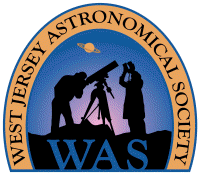|
Mercury 2021 | Weather Links
|
Lunar X
Nova Herculis 2021 (V1694 Her)
June 18, 2021
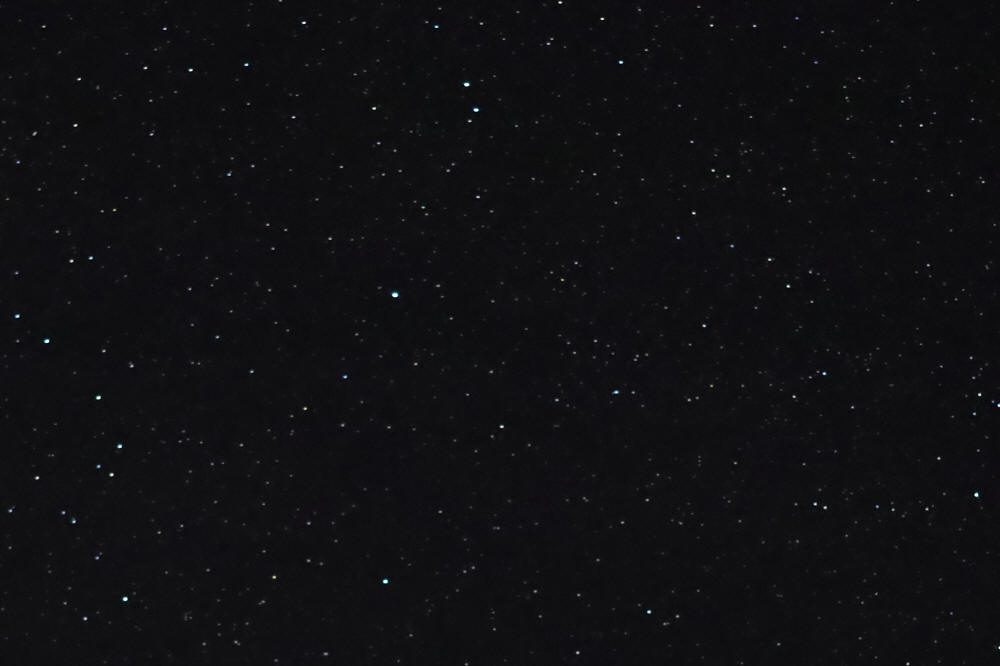
|
Alerted by a
Bob King article at Sky & Telescope online, I observed
Nova Herculis 2021 (V1694 Her) from the NJ Pines at the first
opportunity on June 16, 2021, then again on
June 18, 2021, when I took this snapshot. It was
discovered at magnitude 8.4, brightened to magnitude 6.4,
then faded, hence I was anxious to catch it before it was
too late (especially since I'm largely limited to using my 88 mm
spotting scope now). Using the 88 mm at its maximum 60x, on both
June 16 and 18, I thought Nova Her was comparable in brightness
to a nearby magnitude 10 star. This snapshot was captured on
June 18 at 1:44 am EDT with a Canon EOS
RP mirrorless digital camera and a Canon 200 mm, f/2.8L
telephoto lens on a fixed tripod. It's a single raw frame
exposed 2 seconds at f/2.8, ISO 8000, 4200K white balance.
Unprocessed, but cropped to 38% of its original linear dimensions for a field
4.0° wide x
2.6° high. Mouseover for labels. |
Barnard's Star
June 18, 2021
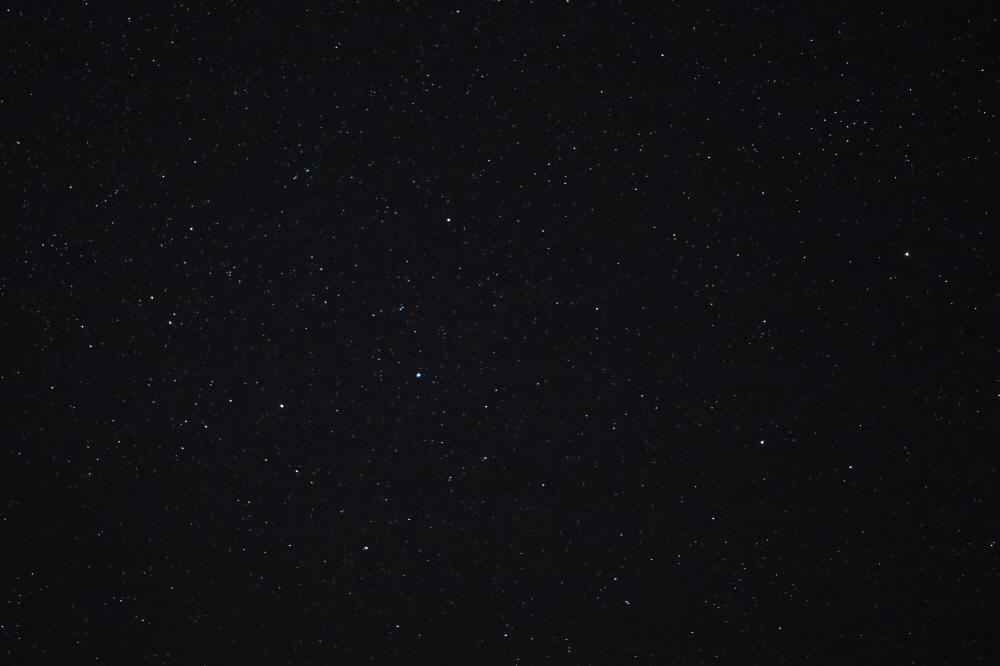
|
I've been following Barnard's Star
(V2500 Oph) for some years now, and usually take at least a
quick look at it when it's in season and I'm out observing. I
also take a snapshot periodically and here's one I took on
June 18, 2021, from the NJ Pines. The last
snapshot I took was on
March
12, 2019 (scroll to the bottom of that page) and before that,
on
May 21, 2017. Barnard's Star has the greatest known proper
motion, about 10.3 arc seconds per year compared to the
background sky, which is roughly a Jupiter diameter every four
years. This image was captured at 1:39 am EDT with a Canon EOS
RP mirrorless digital camera and a Canon 200 mm, f/2.8L
telephoto lens on a fixed tripod. It's a single raw frame
exposed 2 seconds at f/2.8, ISO 8000, 4200K white balance.
Unprocessed, but cropped to 87% of its original linear dimensions for a field
8.9° wide x
5.9° high. Mouseover for labels. The image below is a
further crop for greater enlargement. |
Proper motion detected...
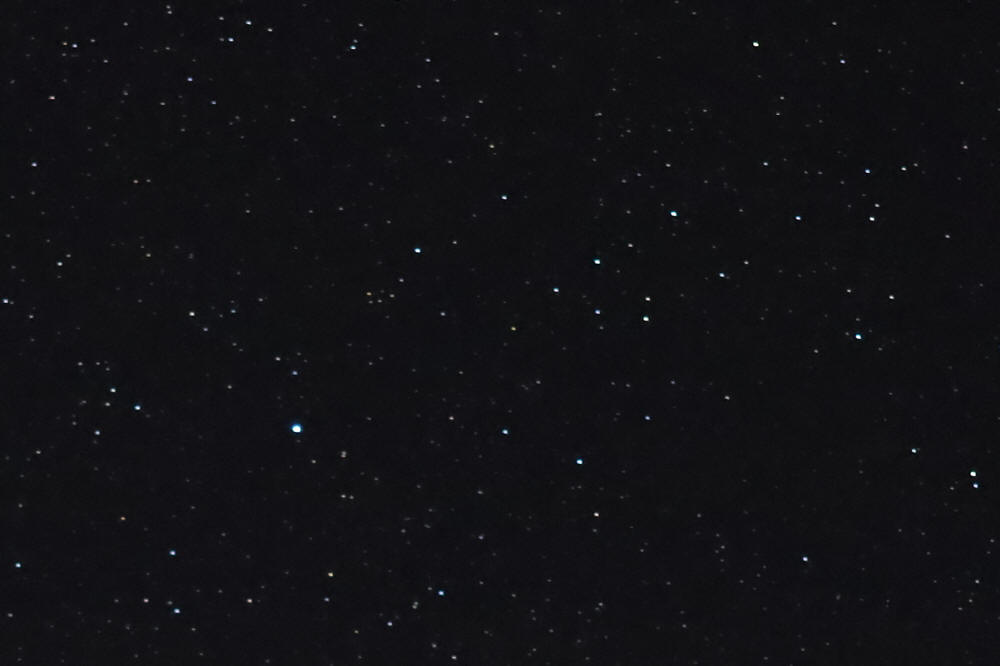
|
This is the same raw frame as the image above from
June 18, 2021, but cropped to 29% of its original linear dimensions for a field
3.0° wide x
2.0° high. Mouseover for labels. While observing
Barnard's Star visually with the 88 mm spotting scope on June 18, I felt
that the spacing between it and TYC 00425-0262-1 had increased
compared to previous years, but that's very subjective and
qualitative. So, I decided to measure this image and
the one I took in mid-May 2017, which would be an approximate
four-year
time span (actually 49 months), to see if there was any apparent change
that would be indicative of proper motion.
I tried on-screen measurements of the spacing between the TYC
star and Barnard's Star, but it was too clumsy to get reliable
values, so I made a negative of each image, enlarged it and
measured the paper printouts with a
nice Pickett 150 mm metal ruler.
I used SkyTools to measure
the angular span between TYC
00425-0262-1
and HD 163697, the left point of the asterism outlined on mouseover
in the above image (it was 811
arc seconds). The resulting plate scale on those two prints was: 2017
= 64 mm = 12.67"/mm; 2021 = 49 mm = 16.55"/mm.
Next, I
measured the span from the TYC star to Barnard's Star: 12.5 mm in 2017
= 158.4", 12 mm in 2021 = 198.6" (a difference of 40.2").
However, the lines from the TYC star to the positions of
Barnard's Star on the two dates were not superimposed but diverged at a 4.8° angle.
Correcting for that with some basic trigonometry, I calculated the distance between Barnard's
Star on the two dates was 42.87", or
10.50"/year, which is pretty close to
the
Hipparcos astrometric spacecraft's proper motion value of
10.36"/year. I also calculated the spans between the
respective stars in the images based their x,y pixel positions
as shown by Corel PaintShop Pro 2021. That yielded a proper
motion of 39.78" or 9.74"/year.
I haven't figured out why the two measurement techniques yielded
moderately different results, but they
averaged 10.12"/year. Updated
on June 28, hopefully for the last time, after building and
using a spreadsheet to do the calculations without any
intermediate rounding. |
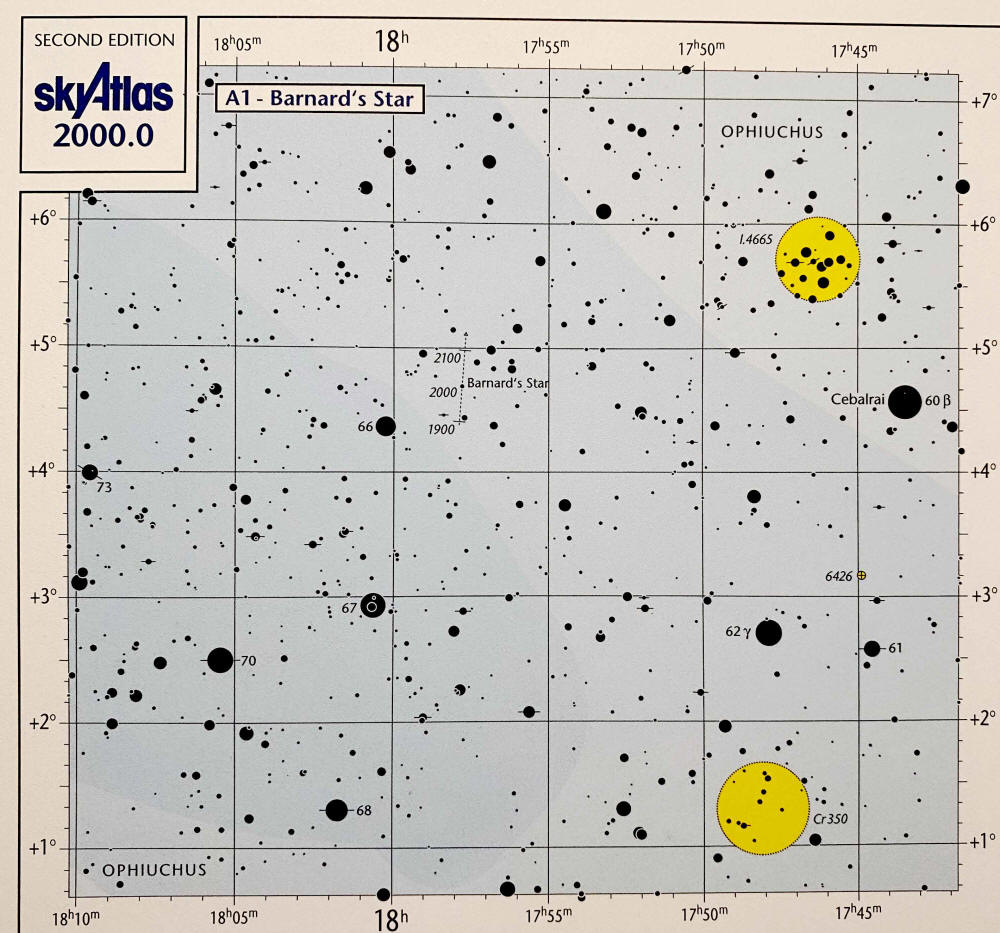
Comet C/2020 T2 (Palomar)
June 18, 2021
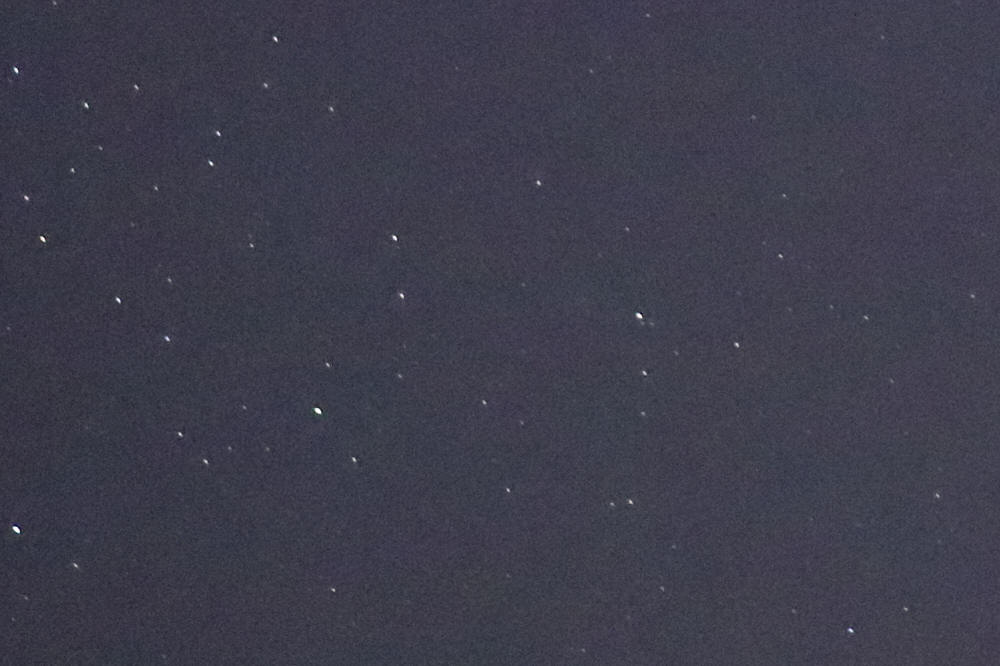
|
The comet C/2020 T2 (Palomar) had been on my observing back
burner because it's been around magnitude 10, which would be
tough for my little 88 mm apo spotting scope. However, on the
evening of June 17, 2021, Ray Maher of the South Jersey
Astronomy Club (my fellow "comet nut") posted that he had seen
it with his 12.5-inch Newtonian. Encouraged by his observation,
I added it to my short target list for my trip to the Pines
later that night. Moonset would be at 1:30 am EDT on June 18, so
I didn't arrive until about 12:45 am. I first looked for the
comet about 1 am, but was unsuccessful, perhaps because the
one-third illuminated moon was still up and not that far from
the comet near Arcturus. I looked again around 2 am, after
moonset, but the comet was now lower in the northwest and into
the Philadelphia light dome, and again I didn't see it.
While I had the camera set up in the interim between initial and
final visual observing, I took some snapshots of the comet area,
hoping something would show up even if I didn't see anything
visually. This image was captured on
June 18, 2021, at 1:29 am EDT with a Canon EOS
RP mirrorless digital camera and a Canon 200 mm, f/2.8L
telephoto lens on a fixed tripod. It's a single raw frame
exposed 2 seconds at f/2.8, ISO 12,800, 4200K white balance.
It was mildly adjusted in Canon's Digital Photo Professional 4
and cropped to 24% of its original linear dimensions for a field
2.5° wide x
1.7° high. Mouseover for labels.
There is a very faint spot of haze at the labeled position on
the image. However, while there are a few other similar hazy
spots on the image, this one is right at the spot corresponding
to the comet's position on a SkyTools chart for the respective
date and time. |
Partial Solar Eclipse
June 10, 2021
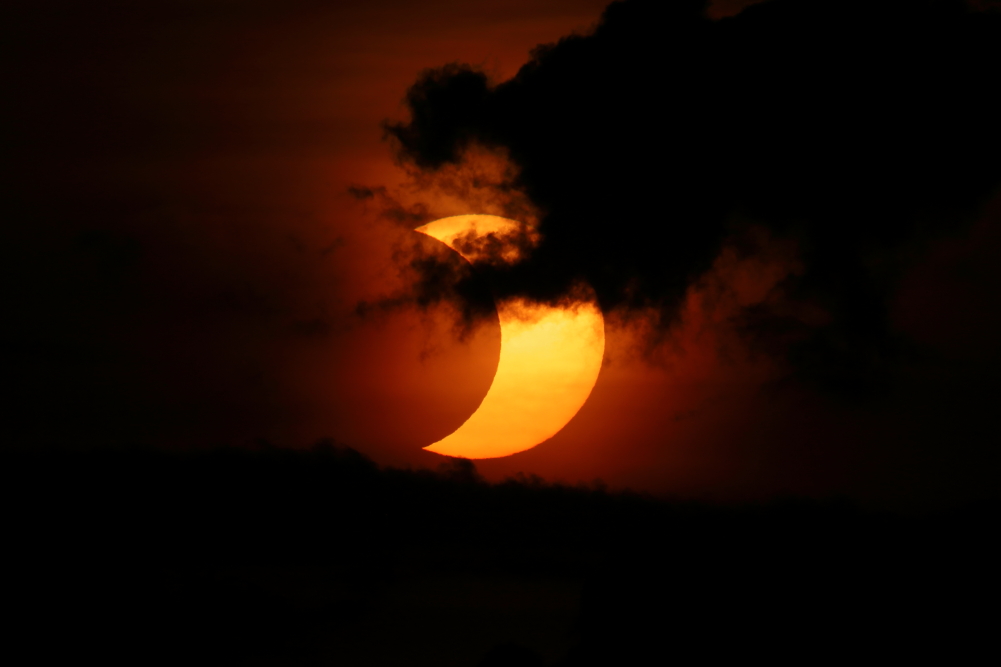
|
There was an
annular eclipse of the sun on
June 10, 2021, but it was only a partial eclipse
as viewed from the Delaware Valley.
This image was captured from Laurel Run Park in Delran, NJ, at 5:51:37 am EDT (sun at 3°02′
altitude) with a
Canon EOS
RP mirrorless digital camera and an unfiltered
Tamron 150 to 600 mm f/5.0 to
6.3 zoom lens (on a fixed tripod) set to 600 mm focal length. It
was automatically exposed (minus 3 stops) for 1/4000
second at f/22, ISO 100 and daylight white balance. Cropped to 58% of its original linear dimensions for a field 2.0° wide x
1.3° high, but otherwise unprocessed.
Click here for more
eclipse pictures. |
(4) Vesta passes M65 & M66
June, 2021
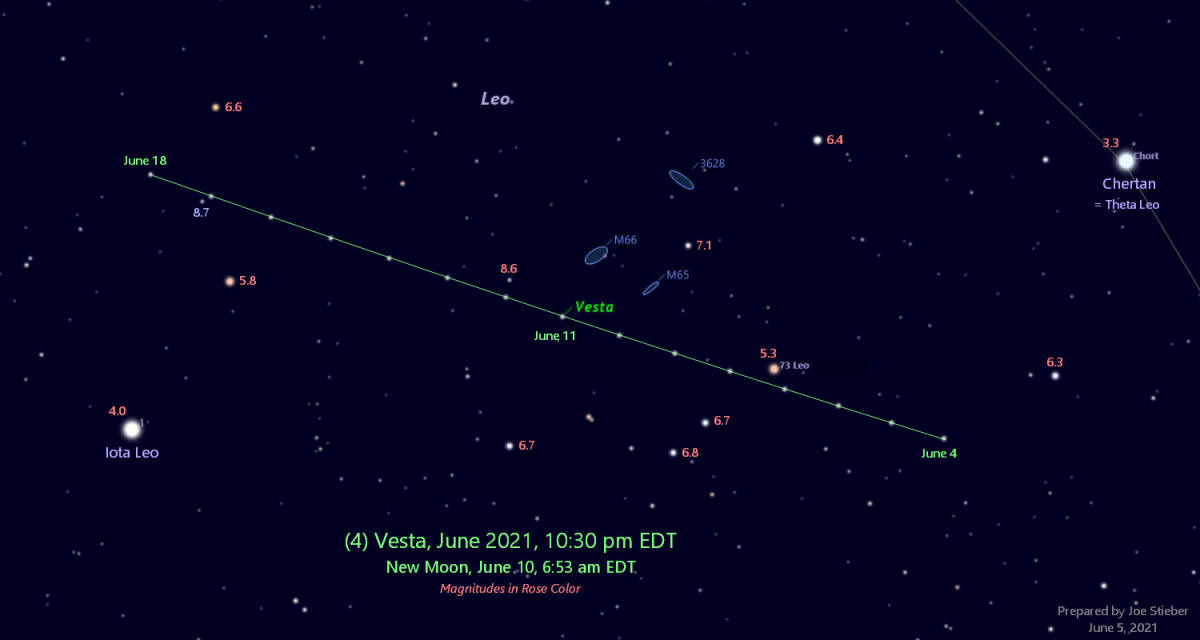
|
The minor planet (or asteroid),
(4) Vesta
is wrapping up it's current 2021 apparition with a close pass of
the well-known galaxy trio beneath Leo's hindquarters, M65, M66
and NGC 3628. In particular, it will pass less than half a
degree south of M65 and M66 on June 10 and 11 respectively, as
shown by the track on the accompanying annotated SkyTools chart.
Vesta is now in the high magnitude 7.x range, but still a
binocular object in clear suburban skies. Click the chart for a
larger version, or
click here for a larger negative version, suitable for
printing. For scale, the stars Iota Leo and Chertan are about
5.4° apart, while the 14-day track of Vesta is about 4.4° long
(an average of one-third degree per day).
Update: I was out to the Pines on
the evening of June 15, 2021, after a spell of bad weather for a
last chance to see Vesta near M66. Using my 88 mm apo spotting
scope at 25x, I spotted Vesta at 11:12 pm, but it was only about
25° altitude in the west, towards the Philadelphia light dome.
As a result, I could not see M66 or either of the other two
galaxies in the trio, and with the widening spacing spacing from
the galaxies, the dropping altitude after sunset and an
increasing moon, the chance to see Vesta and the galaxies
together has passed. Vesta was sighted on June 24 at 11:45 pm
with 15x56 binoculars
from Swede Run in Moorestown, NJ. This sighting of Vesta marks the 44th
occasion I've seen
it since February 16, 2021, and may well be the last time for
this apparition. |
The Lunar X and V
May 18, 2021
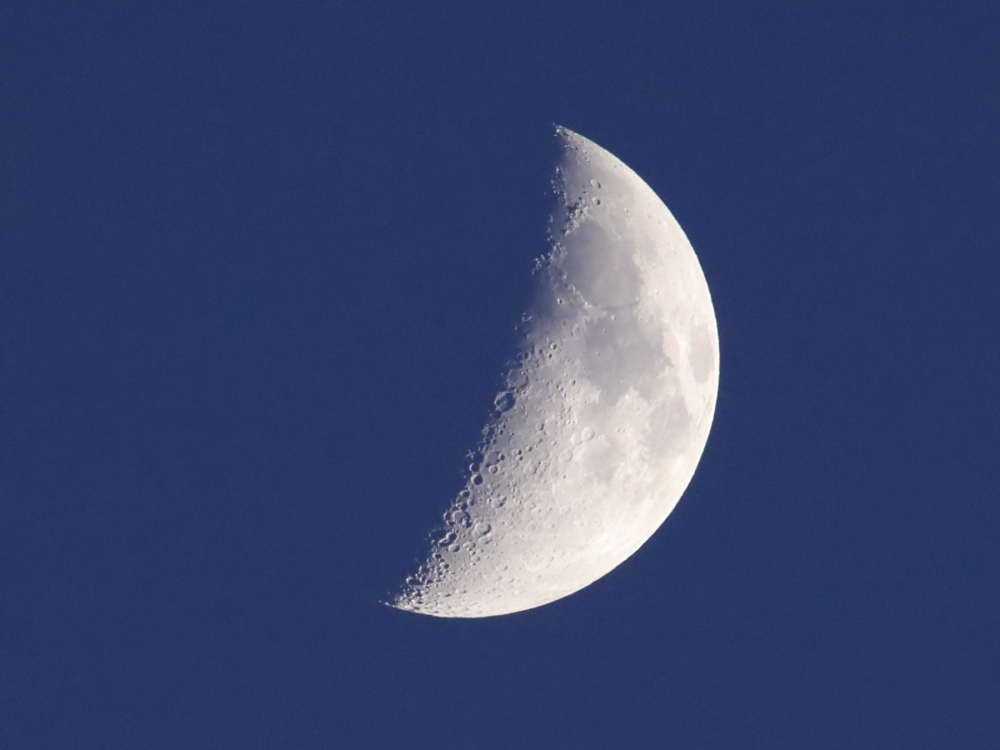
|
The thick crescent Moon
was observed around sunset on
May 18, 2021, from the baseball field complex in
Maple Shade, NJ. The main reason for looking at it, and taking
this picture, was to capture the "Lunar X," an illumination
feature that appears when the rays of lunar sunrise catch the
walls of the craters Purbach, La Caille and Blanchinus (more
about the X). Concurrently, a separate V-shaped illumination
feature appears too.
This is a single frame taken at 8:12 pm EDT (the same time as
sunset)
in a still-bright sky
using a Canon EOS RP mirrorless digital camera and a Tamron 150
to 600 mm f/5 to 6.3 telephoto zoom lens (set to 600 mm focal
length) on a fixed tripod with
a gimbal head (here's
an iPhone picture of the setup). It was exposed 1/1000
second at f/8.0, ISO 4000, daylight white balance, then mildly
adjusted in Canon's Digital Photo Professional 4 and cropped to
29% of the width x 32% of the height (a 4:3 ratio) which yielded
a field 1.0° wide x 0.75° high. Mouseover for labels.
At the time, the 42% illuminated Moon in Leo was at 62° altitude
in the southwest. It was 7.2 days old (after new) and 19 hr
before first quarter on May 19 at 3:13 pm. The "X" occurs at an
typical 358° lunar
colongitude, which
WinJUPOS (download
page) indicated would occur at 7:45 pm (Dave Mitsky's
DVAA monthly calendar predicted 23:41 UT, which equals 7:41 pm
EDT). When I arrived at the baseball field complex and first
looked at the Moon with my 88 mm apo spotting scope at 7:41 pm
using the 25 to 60x zoom eyepiece at 25x, the "X" was plainly
visible, but it was even better at 60x. I continued watching it
on the camera's viewing screen (live view at 600 mm & 10x) through my last shot at 8:12 pm, the picture above.
Here's my Lunar X page.
I've created a page with
Lunar X predictions for our area
(nominally 40°N-75°W) on July 16, 2021. The referenced Dave Mitsky prediction
is from his monthly calendar linked at the
DVAA web site.
Phil Harrington's predictions for 2018 to 2023 are
tabulated here. |
Venus and the Young Crescent Moon
May 12, 2021
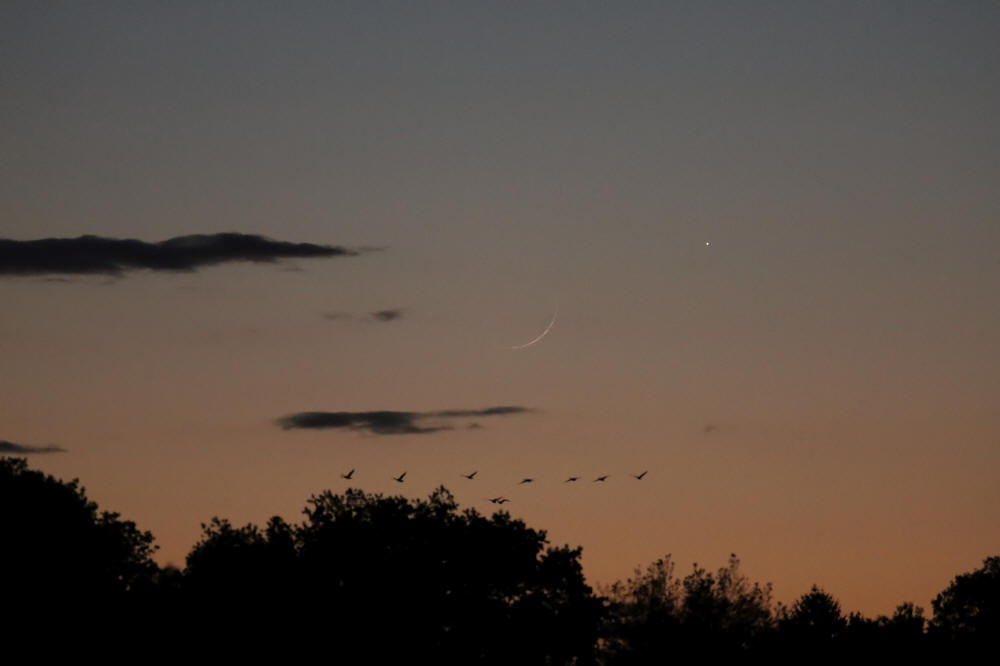
|
The very young crescent Moon
joined the inner planet Venus
on the evening of
May 12, 2021, as shown in this snapshot from
Swede Run in Moorestown, NJ. This is a single frame taken at
8:41 pm EDT with a Canon EOS RP mirrorless digital camera and a
Canon 400 mm f/5.6L telephoto lens on a fixed tripod. It was
exposed 1/320 second at f/5.6, ISO 12,800 and daylight white
balance. It's direct from the camera except for size reduction, removal of a small blemish
and exposure reduction by half a stop. It's uncropped for a field 5.1°
wide x 3.4° high. Mouseover for labels.
At the time, Venus was 4.2° altitude and the Moon 3.9° altitude.
The Moon was 1.24 days old (29 hr 41 min since New Moon on May 11 at 3:00 pm EDT), and it was 1.2% illuminated. The Moon
and Venus were 1.1° apart, center-to-center.
The birds flying along the treetops appear to be the ubiquitous
Canada Geese.
Sunset was at 8:06 pm EDT. Venus and the sublimely thin crescent
moon were initially sighted with 8x42 binoculars at 8:15 pm,
then Venus was spotted immediately afterwards with unaided eyes.
The lunar crescent was first seen with unaided eyes at 8:28 pm,
while the background twilight was still fairly bright. The other
inner planet, Mercury, was a little more than 9° above Venus and
the Moon. It was first sighted at 8:24 pm with the 8x42s, then
unaided eyes at 8:34 pm. Magnitude -3.9 Venus was about 36x
brighter than magnitude 0.0 Mercury. |
Nova Cassiopeiae 2021 - Outburst
May 12, 2021
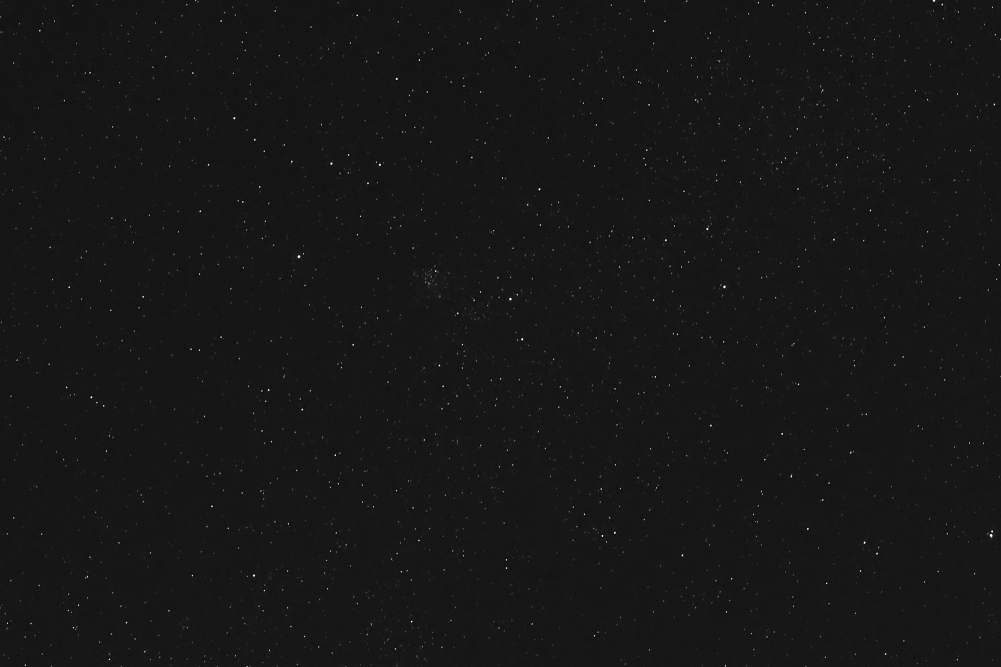
|
Nova Cassiopeiae 2021 (V1405 Cas) experienced a sudden increase
in brightness on May 6-7, 2021, as detailed by Bob King in this
S&T online article. On the morning of May 11, I was able to
observe it in a suburban sky through passing cirrus clouds with
15x56 binoculars (my casual magnitude estimate was 5.4). On the morning of
May 12, 2021, I went to the relatively dark NJ
Pines to attempt seeing it with unaided eyes. I was there from
about 3:30 until 4:15 am (astronomical twilight began at 3:58
am) and passing cirrus clouds were again present, but this time,
there were large gaps between the moving clouds. Using 8x42
binoculars, Nova Cas (estimated magnitude 5.6) was easy to see (as was nearby M52). I
think I might have glimpsed the nova a couple of times with
unaided eyes using averted vision, but they weren't certain
sightings by any means.
The image above is a single raw frame captured at 3:52 am
EDT using a
Canon EOS RP mirrorless digital camera with a Canon 200 mm
f/2.8L lens on a fixed tripod. It was exposed 2.5 seconds at
f/3.2, ISO 6400. It was slightly adjusted with Canon's Digital
Photo Professional 4, including cropping to about 48% of the
original width and height, resulting
in a field about 4.9° wide x 3.3° high. Mouseover for labels.
The numbers after the star designations are the magnitudes (sans
decimal point). Those in yellow are from AAVSO Chart X26520GZ,
those in gray are from SkyTools.
Here's
an image of Nova Cas 2021 that I took on April 21, 2021.
From the mid-5 magnitude range noted above, Nova Cas continued
to drop noticeably in brightness. My casual magnitude estimates
were 5.9 on May 14 (at home, 15x56), 6.6 on May 15 (Swede Run,
15x56) and 7.2 on May 18 (Pines, 15x56 & 88 mm spotting scope).
Update: I went to Swede Run
on June 1 at 1:15 am, June 4 at 10:34 pm, June 5 at 11:30 pm and
June 7 at 3:15 am; in each case using 15x56 binoculars on a
monopod, I estimated Nova Cas as about magnitude 6.8. On June 10
at Carranza, using my 88 mm apo spotting scope, I estimated
magnitude 6.9. As on June 11 around noon, the AAVSO visual light
curve seems to have flattened at about magnitude 7 (for now). N.B., don't bet
the ranch on my magnitude estimates!
Nova Cas was observed again from the Barnegat Road Observing
Site in the NJ Pines on July 23, 2021, using a 130 mm apo
refractor with a 20 mm, 100° eyepiece (= 46x, 2.2° TFOV). With
that. I could easily see the Nova and stars HD 220819, mag 6.6,
and HD 220057, mag 6.9, all at the same time. The nova appeared
to be between them in brightness, which is consistent with the
updated light curve shown below. The nova also displayed a mild
reddish color.
I've been observing Nova Cas casually every time I'm out to the
Pines since then. On October 2,
2021, at the Barnegat Site, I took the time to
do an actual estimate using my 88 mm apo spotting scope at 25x;
it was magnitude 7.8. Contemporaneous estimates at AAVSO
averaged about magnitude 7.7.
This is a screen clip of the light curve
generated from
AAVSO data for Nova Cas through July 26 and represents visual and visual
equivalent photometric magnitude estimates.
Click here to see the current light curve including all wavelengths. |
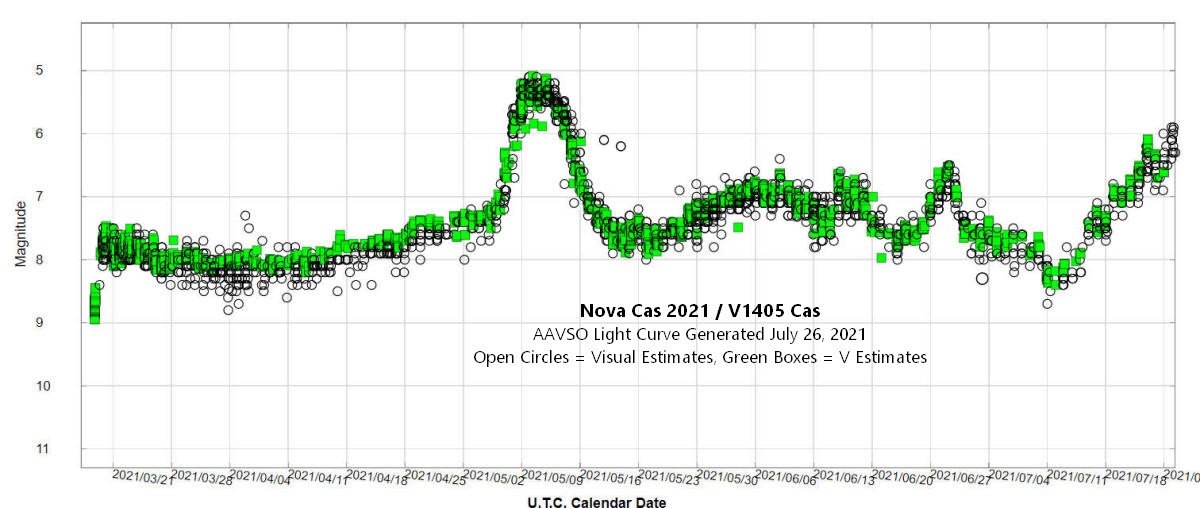
Venus and Mercury
April 26, 2021
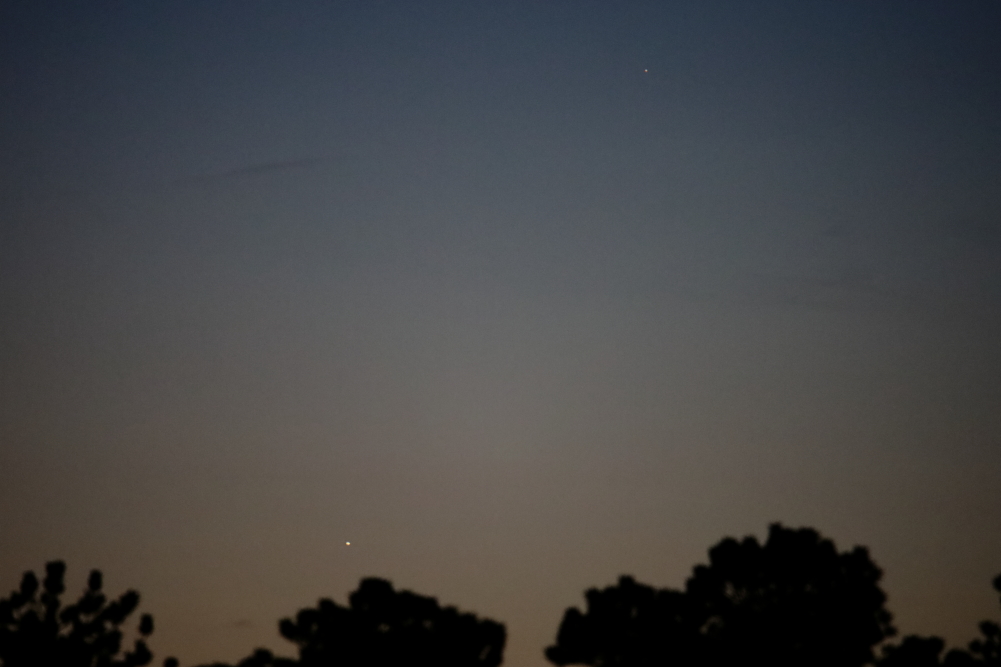
|
The sky was quite clear on the evening of
April 26, 2021, so I went to Carranza Field in Wharton
State Forest, NJ, to spot Venus
and Mercury around
sunset at 7:48 pm EDT. They were in conjunction on this date at
5 am, about 1.3° apart. By sunset, that spacing had increased to
about 1.6° as rapid Mercury moved eastward past Venus (nominally
upwards in this view).
Magnitude -3.9 Venus was
initially spotted at 7:38 pm with 15x56 binoculars (stabilized
on a monopod) when it was at 8.6° altitude and lost to the
treetops at 8:08 pm, 3.2° altitude. Magnitude -1.5
Mercury was initially spotted with
the 15x56s at 7:45 pm when it was at 8.7° altitude and lost to
the treetops at 8:15 pm, 3.3° altitude. They were also seen with
8x42 binoculars, but with either pair of binoculars, they were
somewhat difficult to see, especially with the 8x42s, because of minimal contrast against the
relatively bright twilight background. Neither planet was seen with unaided eyes.
This is the fourth sighting of Venus for this elongation and the
second for Mercury. The first for Venus was in the daytime, at
4:02 pm on April 13 and the second was just after sunset on
April 19. Both Venus and Mercury were sighted around sunset on
April 23 and 26, in each case with 15x56 binoculars and several
instances with 8x42 binoculars. Venus may have been
glimpsed with unaided eyes on April 23.
The image above is a
single raw frame taken at 8:07 pm using a Canon EOS RP mirrorless
digital camera with a Tamron 150 to 600 mm f/5.0 to 6.3 zoom
lens on a fixed tripod, set to 600 mm focal length.
It was automatically exposed 1/1000 second at f/6.3, ISO 6400,
then mildly adjusted with Canon's Digital Photo professional 4,
including cropping to 80% of the
original dimensions, resulting in a field about
2.75° wide x 1.84° high. Mouseover for labels. |
Comet C/2020 R4 (ATLAS)
April 21, 2021
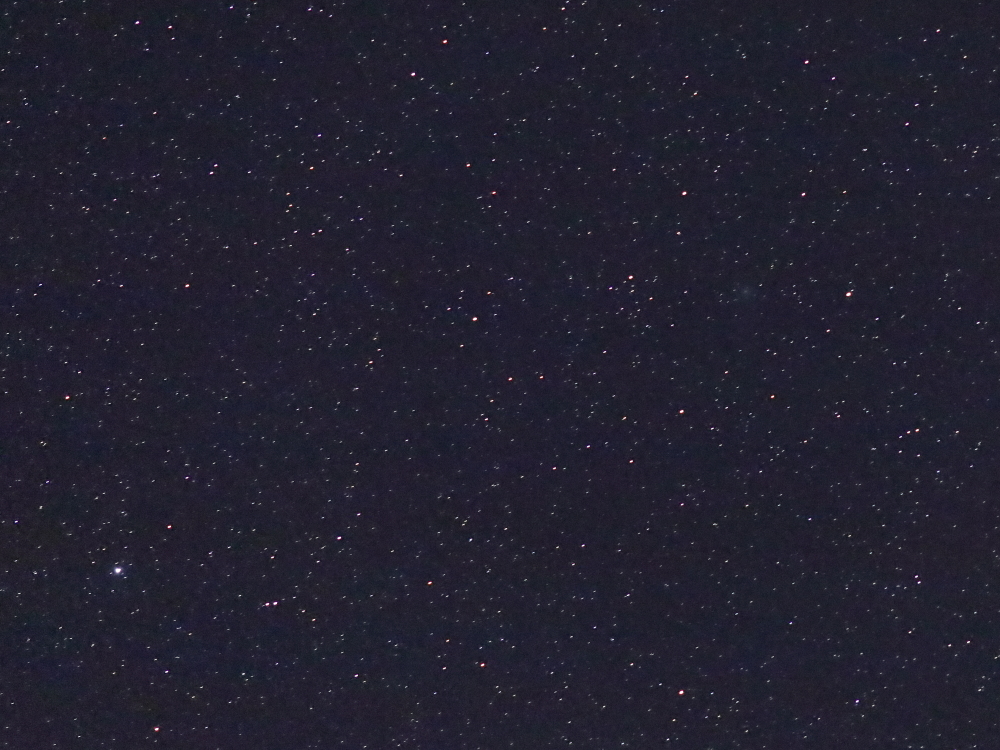
|
Since it was clear on the morning of
April 21, 2021, I went to Wharton
State Forest, NJ, to catch the last moon-free hour before full
moon on April 26. The moon, a day past first quarter, set at
3:24 am EDT and astronomical twilight would begin at 4:33 am. I
arrived at 2:50 am and the sky was cloud free with satisfactory
transparency. The temperature was pleasant at 49°F with no wind.
When I left at 4:15 am, it was 47°F.
I first attempted to sight
Comet C/2020 R4 (ATLAS) at 3:10 am
with 15x56 binoculars. I think I spotted a small, faint
patch of haze in the expected position between Sarin (Delta
Her) and Kornephoros (Beta Her), which are south
of the Hercules Keystone. I then looked with my 88 mm apo
spotting scope at 25 to 60x and was fairly certain I that I did
see a patch
of faint haze at 3:15 am. This was a follow-up to my initial
sighting of the comet on April 8 with my 130 mm
apo refractor, with which it was just a faint glow too.
Here's some data at COBS.
The image above shows the comet as a
distinct hazy patch at the respective location. It's from a
single raw frame taken at 3:23 am using a Canon EOS RP mirrorless
digital camera with a Canon 200 mm f/2.8L lens on a fixed tripod.
It was exposed 4 seconds at f/2.8, ISO 8000. Some
adjustments were made in Canon's Digital Photo professional 4,
including cropping to a 4:3 ratio, using about 64% of the
original width x 72% of the height, resulting in a field about
6.6° wide x 5.0° high. Mouseover for labels.
Martin Mobberley
captured this view about three hours later, remotely from
New Mexico. During the interval, the comet moved about 33 arc
minutes to the northwest, a rate of 4.4° per day. The rapid
apparent motion reflects the comet being at its closest approach
to earth (0.46 au away) on or around April 23, 2021. |
Click here
for the previous page.
Click here
for an index to all previous SJAstro pages.













